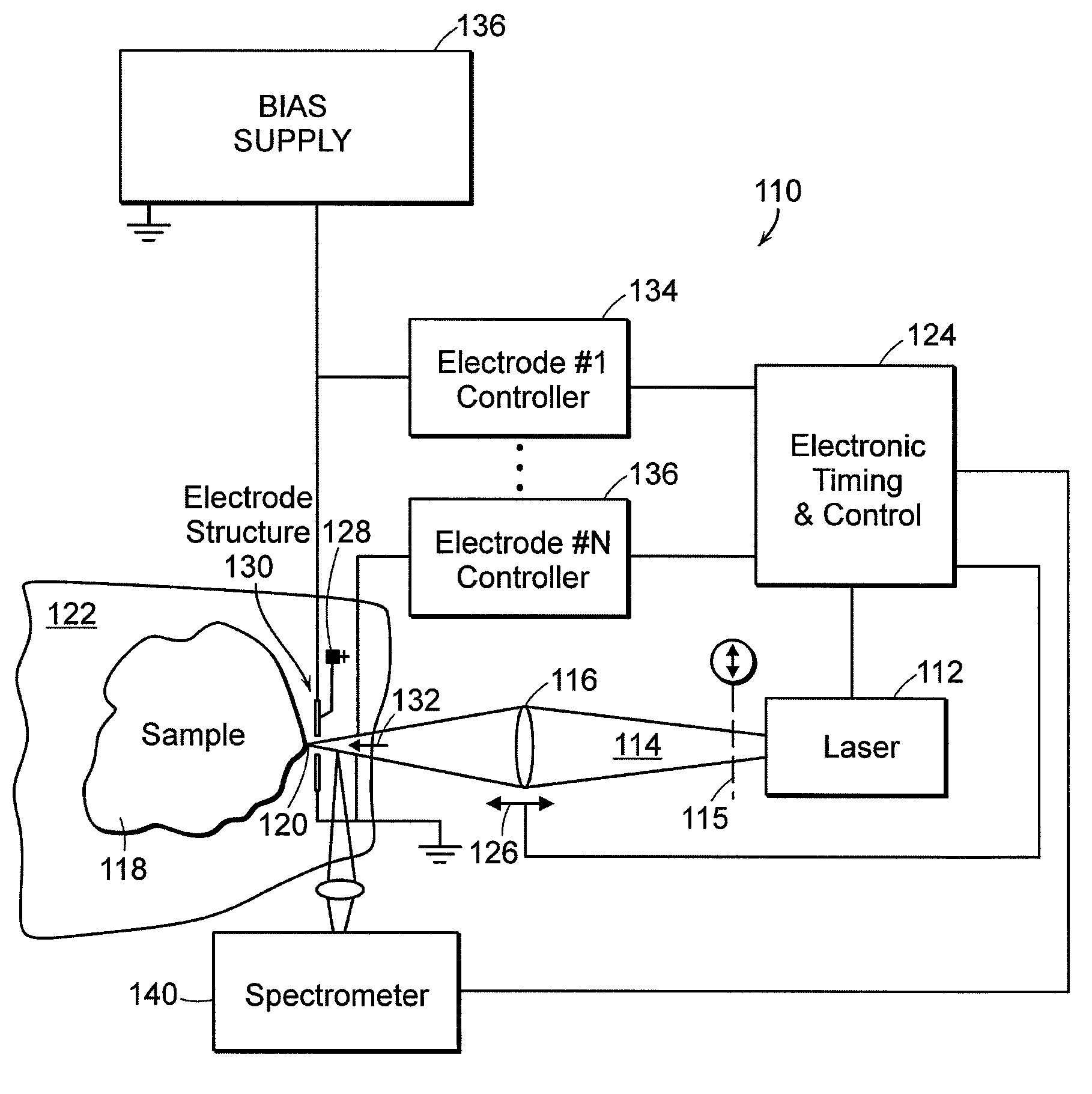Laser-triggered plasma apparatus for atomic emission spectroscopy
a plasma apparatus and atomic emission technology, applied in the direction of optical radiation measurement, instruments, spectrometry/spectrophotometry/monochromators, etc., can solve the problems of difficult control, limited application of ed techniques, and difficult to achieve high stability of sensed optical signals
- Summary
- Abstract
- Description
- Claims
- Application Information
AI Technical Summary
Benefits of technology
Problems solved by technology
Method used
Image
Examples
Embodiment Construction
[0036]Preferred embodiments of the invention described herein are directed to the use of multiple energy sources to excite material for subsequent analysis of optical emission, obtaining advantages of synergy and eliminating some of the source-specific drawbacks. In accordance with certain of the preferred embodiments of the present invention, multiple energy sources are employed within a single hand-held or portable optical emission spectroscopy (OES) device in order to create a suitably energetic and controlled plasma for spectroscopic characterization.
[0037]Definitions: As used herein and in any appended claims, energy sources are distinct when their energy spectra are non-identical, whether or not their respective applications overlap in time. Moreover, the energy spectrum of one of the energy sources may include a static field, which may be characterized as a “DC” field, whether or not current is actually flowing, and without regard to the duration of time during which the stat...
PUM
 Login to View More
Login to View More Abstract
Description
Claims
Application Information
 Login to View More
Login to View More - R&D
- Intellectual Property
- Life Sciences
- Materials
- Tech Scout
- Unparalleled Data Quality
- Higher Quality Content
- 60% Fewer Hallucinations
Browse by: Latest US Patents, China's latest patents, Technical Efficacy Thesaurus, Application Domain, Technology Topic, Popular Technical Reports.
© 2025 PatSnap. All rights reserved.Legal|Privacy policy|Modern Slavery Act Transparency Statement|Sitemap|About US| Contact US: help@patsnap.com



